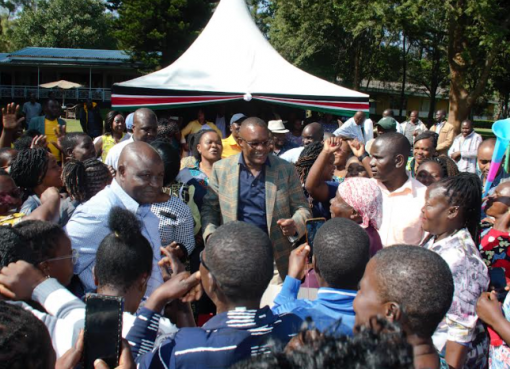The government has pumped Sh344 million through the National Agriculture and Rural Inclusive Growth Project (NARIGP) to support agriculture value chains in Nakuru County.
The County NARIGP Coordinator Njoroge Githunguri said the funds supported programs on capacity building for farmers, improvement of dairy farming, purchase of milk coolers, and construction of cold potato storage facilities among others.
According to Githunguri, some 20,533 smallholder farmers in the devolved unit have benefited from micro-projects that have been funded via four value chains including Dairy, Apiculture, Irish Potatoes and Improved Kienyeji chicken.
Among the projects funded through NARIGP is the Sh117 million cold room store in Muchorwe within Molo Sub-County, aimed at cushioning potato farmers against post-harvest losses and eliminating their exploitation by brokers.
The cold room designed to hold 4 million kilograms of potatoes will be equipped with an information centre and proper storage areas, which will prolong the shelf life of the harvest by four to six months and also maintain consistency in quality.
Nakuru is the second largest producer of the crop in Kenya County accounting for 18.9 percent of national production.
In Nakuru, there are about 20,000 farmers growing potatoes on more than 38,000 acres of land, with a total production of 160,000 tonnes of assorted varieties being grown with shangi dominating.
The coordinator disclosed that so far a total of 934 Vulnerable and Marginalized Groups (VMGs) and Common Interest Groups and 12 Cooperative Societies have been funded.
Githunguri added that Sh700 million had so far been disbursed to various projects in Nakuru County since NARIGP was inaugurated five years ago.
The project which is a partnership between the National Government and the World Bank was scheduled to run up to 2022, but received a year’s extension and will now come to a close in March 2024.
The Sh21 billion NARIGP targeted 21 counties seeking to increase agricultural productivity and profitability, leading to improved food security and livelihoods and reduced vulnerabilities of targeted rural communities in the selected counties.
The project targeted rural communities in Nakuru, Turkana, Makueni, Meru, Kitui, Embu, Kilifi, Kwale, Narok, Kirinyaga, and Murang’a counties. Others are Trans Nzoia, Nandi, Vihiga, Kisii, Nyamira, Migori, Homa Bay and Bungoma.
The project areas within Nakuru include Molo, Njoro, Bahati, Naivasha, and Kuresoi North Sub Counties.
Speaking at the Soilo Agricultural Training Center, the coordinator indicated that the project had made significant gains in addressing challenges holding back the dairy sub-sector in Nakuru County.
These include limited availability of quality and affordable feeds, inadequate infrastructure, including access roads and milk cooling facilities, limited extension services, low-value addition to absorbing surpluses during glut, and limited access to markets and market information.
Githunguri stated that Sh.14 million had been spent on training farmers and procurement of animal feed formulation machinery and equipment for cooperative societies to help boost profitability in milk production.
“The financing component also enabled smallholder animal feed manufacturers to buy machinery and equipment. The situation had been aggravated by the fact that most feed manufacturers, especially small-scale ones do not have proper equipment, lacked basic training in feed formulation, animal nutrition, and feed production processes,” he said.
Nakuru is the third leading devolved unit in milk production in the country with 381,600 dairy cattle after Kiambu and Murang’a counties.
“Animal feed constitutes 60 to 70% of the total cost of livestock and aquaculture farming. Through NARIGP’s initiative cooperative societies, farmer groups and, Agricultural extension officers were equipped with skills to formulate feeds from maize germ, sunflower, wheat bran, cotton seed, coconut pollard, boma Rhodes, and brachiaria grass. They received extensive training on fodder establishment and conservation and silage making,” said the coordinator.
He observed that the venture had introduced various strategies that targeted to have dairy cooperatives in the county come together to form a union and facilitate the installation of a dairy processing plant and a feed manufacturing unit.
“We have been able to help smallholder farmers access quality feeds and AI services as well as appropriate finance to support the transition to commercial dairy farming. Enhancing milk yield per cow can be achieved by adopting better production systems, including quality artificial insemination (AI) services,” said Githunguri.
In the Dairy Sub Sector, micro-projects have been supported in Molo, Njoro, Kuresoi South, Bahati, and Naivasha sub-counties in 20 selected wards.
Githunguri added that over 3,000 beehives had been given to various groups practicing apiculture, while over 50,000 indigenous tree seedlings had been issued to farmers to encourage agroforestry and conservation agriculture.
By Jane Ngugi and Dennis Rasto




